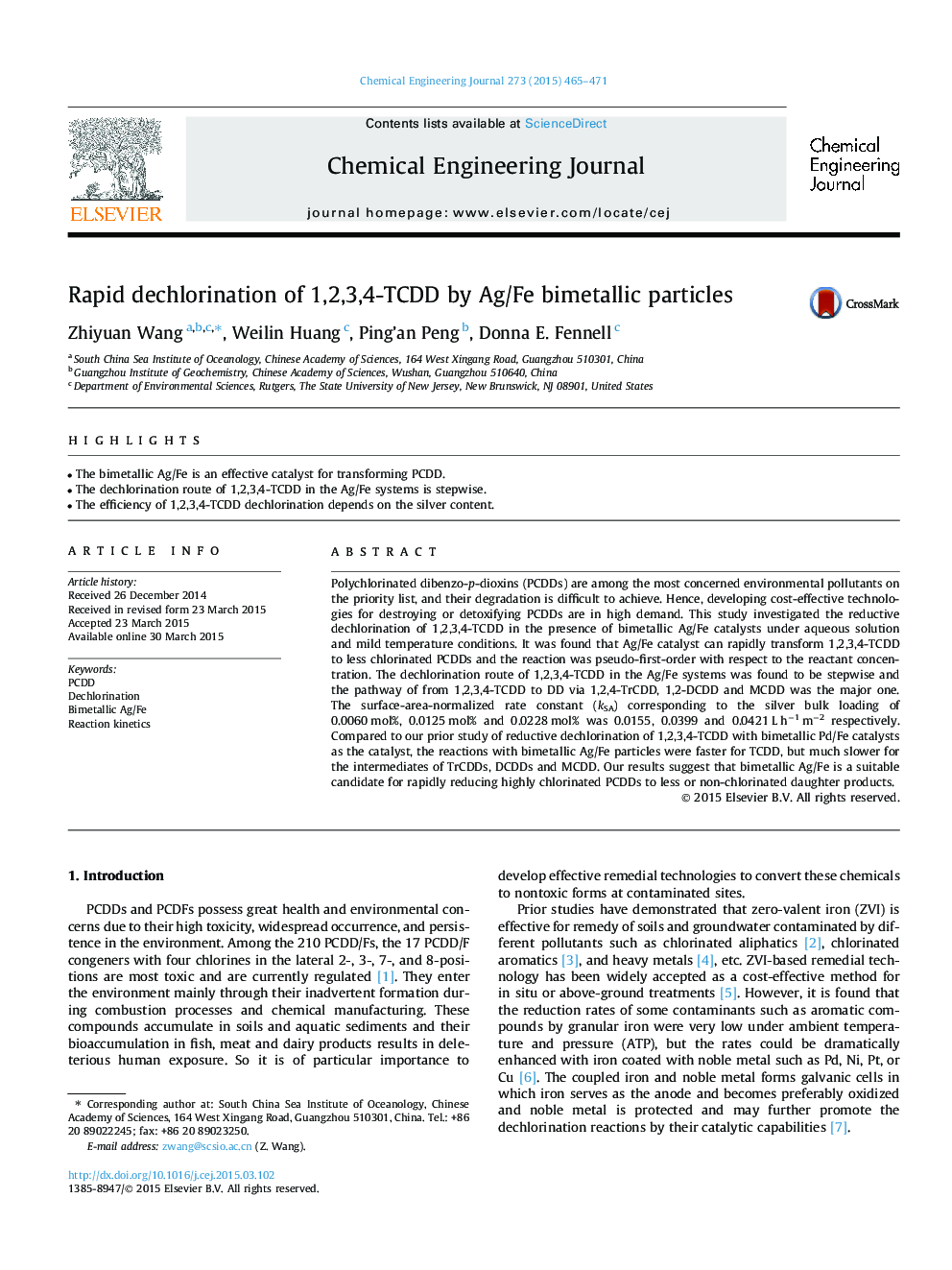| Article ID | Journal | Published Year | Pages | File Type |
|---|---|---|---|---|
| 6584914 | Chemical Engineering Journal | 2015 | 7 Pages |
Abstract
Polychlorinated dibenzo-p-dioxins (PCDDs) are among the most concerned environmental pollutants on the priority list, and their degradation is difficult to achieve. Hence, developing cost-effective technologies for destroying or detoxifying PCDDs are in high demand. This study investigated the reductive dechlorination of 1,2,3,4-TCDD in the presence of bimetallic Ag/Fe catalysts under aqueous solution and mild temperature conditions. It was found that Ag/Fe catalyst can rapidly transform 1,2,3,4-TCDD to less chlorinated PCDDs and the reaction was pseudo-first-order with respect to the reactant concentration. The dechlorination route of 1,2,3,4-TCDD in the Ag/Fe systems was found to be stepwise and the pathway of from 1,2,3,4-TCDD to DD via 1,2,4-TrCDD, 1,2-DCDD and MCDD was the major one. The surface-area-normalized rate constant (kSA) corresponding to the silver bulk loading of 0.0060Â mol%, 0.0125Â mol% and 0.0228Â mol% was 0.0155, 0.0399 and 0.0421Â LÂ hâ1Â mâ2 respectively. Compared to our prior study of reductive dechlorination of 1,2,3,4-TCDD with bimetallic Pd/Fe catalysts as the catalyst, the reactions with bimetallic Ag/Fe particles were faster for TCDD, but much slower for the intermediates of TrCDDs, DCDDs and MCDD. Our results suggest that bimetallic Ag/Fe is a suitable candidate for rapidly reducing highly chlorinated PCDDs to less or non-chlorinated daughter products.
Keywords
Related Topics
Physical Sciences and Engineering
Chemical Engineering
Chemical Engineering (General)
Authors
Zhiyuan Wang, Weilin Huang, Ping'an Peng, Donna E. Fennell,
